Solar Striker
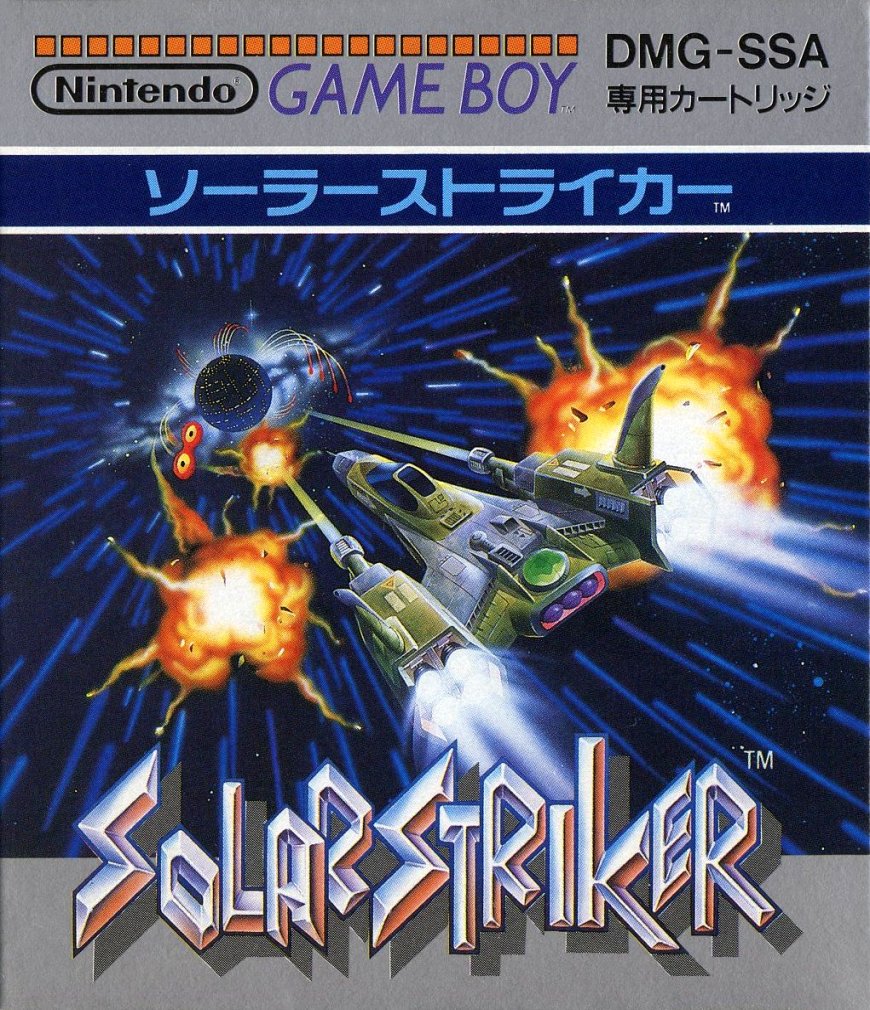
- Japanese release in January 1990
- North American release in February 1990
- European release in 1990
- Asian release in 1990
- Korean release in 1990
- Japanese release in March 2000
- Developed by Minakuchi Engineering
Ludo-Political Positioning

Nintendo has always been a hydra; a company with many independent heads. R&D1, one of these hydra head, was Gunpei Yokoi’s fiefdom, an internal development studio that he personally managed. The department, and so Yokoi, was responsible for the Game Boy itself and for most of the early titles of the system. In terms of software, they were clearly given the responsibility of setting the table, so to speak. We can see that with Super Mario Land & Tetris, two seminal R&D1 titles on the system. Super Mario Land shows how to build a platformer for Game Boy (nobody followed their advice) and Tetris showed what experiences Game Boy could provide that no other system could. Outside of their responsibilities as torchbearers for what the Game Boy could be, those games are interesting and fun.
On the other hand, you have Solar Striker. Released eleven months after the system’s launch in Japan, Solar Striker is so barebones that the only thing of any interest to modern players is its overarching role in the Game Boy library. It’s simply Nintendo looking at the market, seeing there are no shooters on the system and just pumping one out quickly with the help of a small developer. It shows what Nintendo was willing to do to make sure that its platform had a full set of game types to showcase how a Game Boy game should be done. For that, it’s essential.
Simple Yet Barren
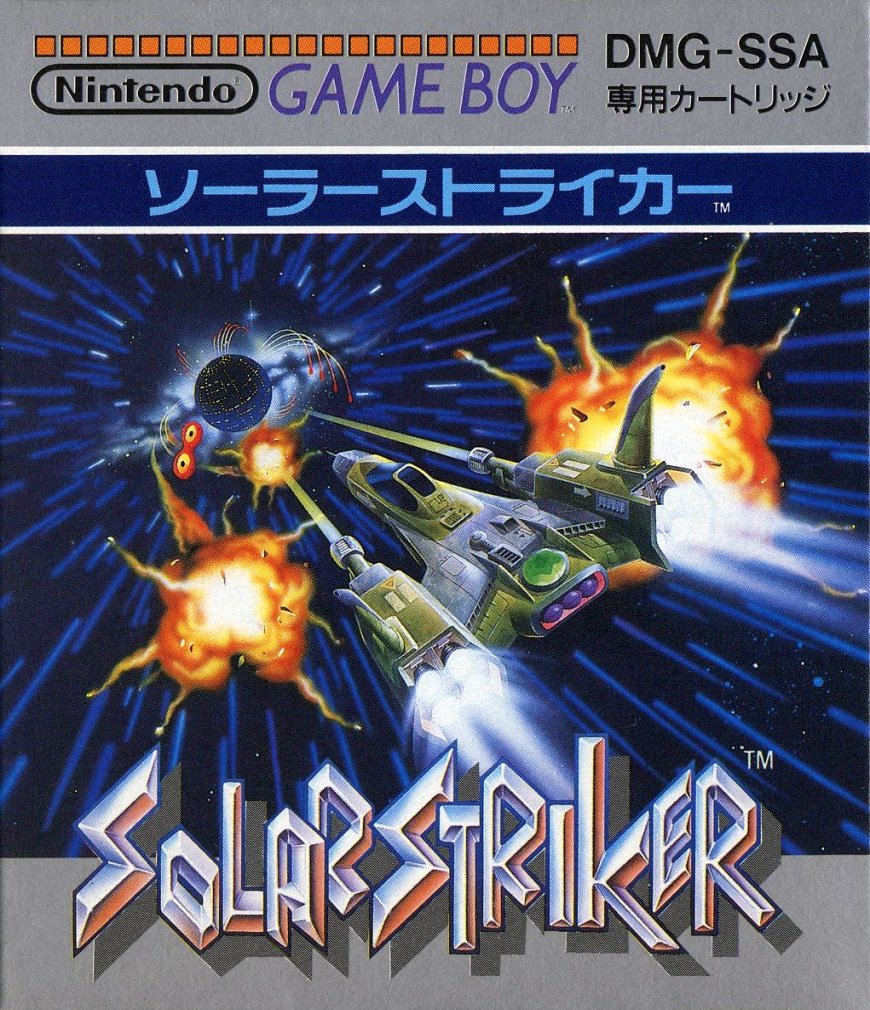
Every time I write an article about a game there’s always stuff that I wish I could have written about. Details that are interesting but just did not fit in the article I was writing. This time I’ll have written about everything I want to because the game is so small and simple. In fact the webpage this article births from, completely coded by hand to be as light as possible (I’m very anal about this), weighs more than the game itself. Solar Striker is a meagre 66 KB of video gaming.
Anyway, you put in the game and you’re treated to an oddity. You get a title screen, you push start and you’re playing the game. There’s no company logo, no story scroll, nothing to distract you from the gameplay. Even in 1989, this was passé. This practice of jumping you straight into a title screen was the realm of 1983 early Famicom games (1985 NES for us North Americans). But when the Game Boy first came out, they clearly wanted to emulate the first titles of the NES but on the go, so they did the same things. Super Mario Land, Tetris, Baseball & Tennis all booted straight to the start screen.
Managing Three Bullets
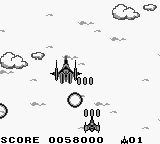
Solar Striker can be resumed in three words: manage three bullets. That’s all you do. You can have three bullets on the screen at a time, no more. You then have to decide: do you want to shoot one bullet per enemy, conserving shots for other hazards that might pop up, do you want to hold the button to fire willy-nilly, or do you want to press the button rapidly to fire your three bullets even faster than holding the button would? That’s the crux of everything you do. Of course you also need to move your little ship but I would argue it’s less important than bullet management. You move to be able to deliver bullets to enemy ships in this game. You barely dodge. Unless your upgrades have all been decimated and you’re down to the pea-shooter you get when you start. Then you need to dodge like hell because your firepower is gone and you can’t expect to destroy your enemies before they can attack you. Your upgrades increase the damage you inflict and as early as the third level of the game, you pretty much need at least a couple of upgrades if you hope to be able to destroy enemies reliably. If you’re out of upgrades, you’re mostly dodging enemies that are too tough to destroy. It quickly sours your enjoyment of the game.
A Brutal Upgrade System

Let’s explain upgrades. Late 80s shooters lived and died by their upgrade systems. This was their calling card, what set them apart from one another; I’d argue even more so than whether they had horizontal or vertical orientation.
Solar Striker decided to be too complicated while being too simple at the same time. Upgrades come in one type; you destroy an enemy who acts as a box falling from the top of the screen which then leaves an upgrade behind. This means that you can’t afford to miss them when they show up. Since you cannot shoot behind you, there’s always a risk you’ll see the box too late and it will be too low to hit with your bullets. You’ll have missed a very important upgrade because you weren’t paying attention.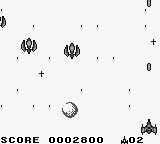 You get your upgrades from these boxes. Do not miss them.
You get your upgrades from these boxes. Do not miss them.
Second, you get a limited number of upgrade items. For example, the first level has four upgrades, no more no less. You can’t afford to miss them, they are sparse and spread apart and provide much-needed quality-of-life improvements. This is very different from games like Gradius or TwinBee where upgrades are plentiful. It instead feels more like Galaga, where upgrades where an event.
This stinginess with necessary upgrades means that you spend the whole game sweating over upgrades, trying to make sure not to miss them. When you do pick up an upgrade, they alternate between widening your bullets’ hitbox or speeding them up; you have no choice in your type of upgrades. They simply get better linearly, but in a strange seesaw manner that at first glance looks like they get worse.
- One bullet (starting point)
- Two bullets
- Two bullets (faster)
- Three bullets
- Three bullets (faster)
- Two lasers
- Two lasers (faster)
When you move from the two fast bullets to the three bullets your bullet speed goes back down. Then it shoots back up with the next upgrade, before going back down in speed at the final level. It’s a seesaw upgrade system. When you get hit, you immediately lose a ship and reappear at the bottom of the screen. You also go back to the start of the previous visual level of upgrades. So if you were shooting three faster bullets, meaning you were at level 5, after you die you end up all the way back at two slow bullets, back at level 2. But if you were at three slow bullets you go back to the same two slow bullets as well. Depending on when you die, it can be a small nuisance or a total catastrophe. The fact that you reappear where you died would make you think the game is not punishing, but robbing you of very sparsely distributed upgrades is no fun.
On top of that your bullets do not get wider after the second level, they only get stronger. The three bullets are not wider than the two bullets. As a matter of fact, they’re not even three different objects. You can’t hit an enemy with one bullet and have the other one fly past it, not hurting that target. They’re one object, interacting as a single point. It’s a shame, you’d expect better attention to detail from Nintendo, but in all fairness R&D1 was never the most detail-oriented division of the big N.
Incongruous Playfield
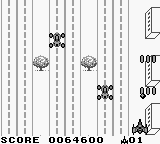
Solar Striker is a horizontal shooter: it means you are looking at the action from the top. Strangely enough, the game scrolls to the side. Instead of simply having the playfield be as wide as the Game Boy’s screen, the developers decided to have a small amount of extra space to the left and right of the screen. The Game Boy screen is 160 pixels wide, but Solar Striker’s play field is 194 pixels wide. Why did they have the screen scroll? You don’t really benefit from the larger playfield, it’s even a chore to have to edge from left to right to make sure you don’t miss any upgrade. I see no reason to include side-scrolling other than they could. Again, a lack of attention to detail.
Conclusion
Solar Striker is ultimately a blunt object. It’s a game with six levels of unfair enemies that are there to make you learn their quirks by playing it time and time again. That way, it lengthens the experience of what is ultimately a barebones experience, even for the first shooter on Game Boy. Nintendo should have just waited a month and left the task of being the first shooter to Konami’s Nemesis. It’s a legit classic that puts Solar Striker to shame.
This article was first published on the .
This article was last modified on the .